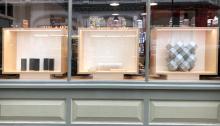The review, Building a Safer Future: Independent Review of Building Regulations and Fire Safety: Final Report, also calls for a “focus on reducing ongoing building risks during the occupation and maintenance phase”.
Dame Judith Hackitt published her review of building regulations and fire safety, which was commissioned in the wake of the Grenfell Tower fire in London which killed 71 people last year.
The Concrete Centre submitted evidence to the review based on its engineering and fire expertise.
“It is now evident that buildings degrade, and fire protection is compromised during use of a building, so the choice of non-combustible concrete and masonry is a very good way to reduce these risks,” says Dr Andrew Minson, executive director.
The Concrete Centre also support the report’s focus on Construction Design Management (CDM) regulations and the recommendation for involvement of the Health & Safety Executive (HSE) beyond completion of construction.
“We continue to express concerns that fire risk in construction, and during occupancy have not been a high enough priority.
“In recent years, HSE recognised and acted on the heightened risks from timber framed buildings during construction, and we urge government to do more to ensure that non-combustible structural materials are used for higher risk, high-rise residential buildings.
“We also support the report’s clear recommendation that these guidelines be applied more widely”.
Dame Judith Hackitt also recommends creation of new structures: a structure to validate and assure guidance; a Joint Competent Authority to deliver rigorous enforcement, and an overarching body for competency.
The Concrete Centre is an active participant in expert forums of fire engineers, fire-fighters as well as the professional institutions, and will continue to provide its expertise into any future government reviews to support the aim of delivering a safer built environment.
The public inquiry has just started public hearings and the findings of Hackitt’s final report are being reflected upon by both government and the construction industry.
The Concrete Centre says it will continue to play its part in seeking the means of improving fire safety and resilience.
Designers have always had a responsibility to consider fire as a real possibility that can affect people’s lives and livelihoods.
It says that choosing non-combustible materials, such as concrete and masonry, for the main structure of a building, provides an excellent starting point for achieving an even safer built environment.









